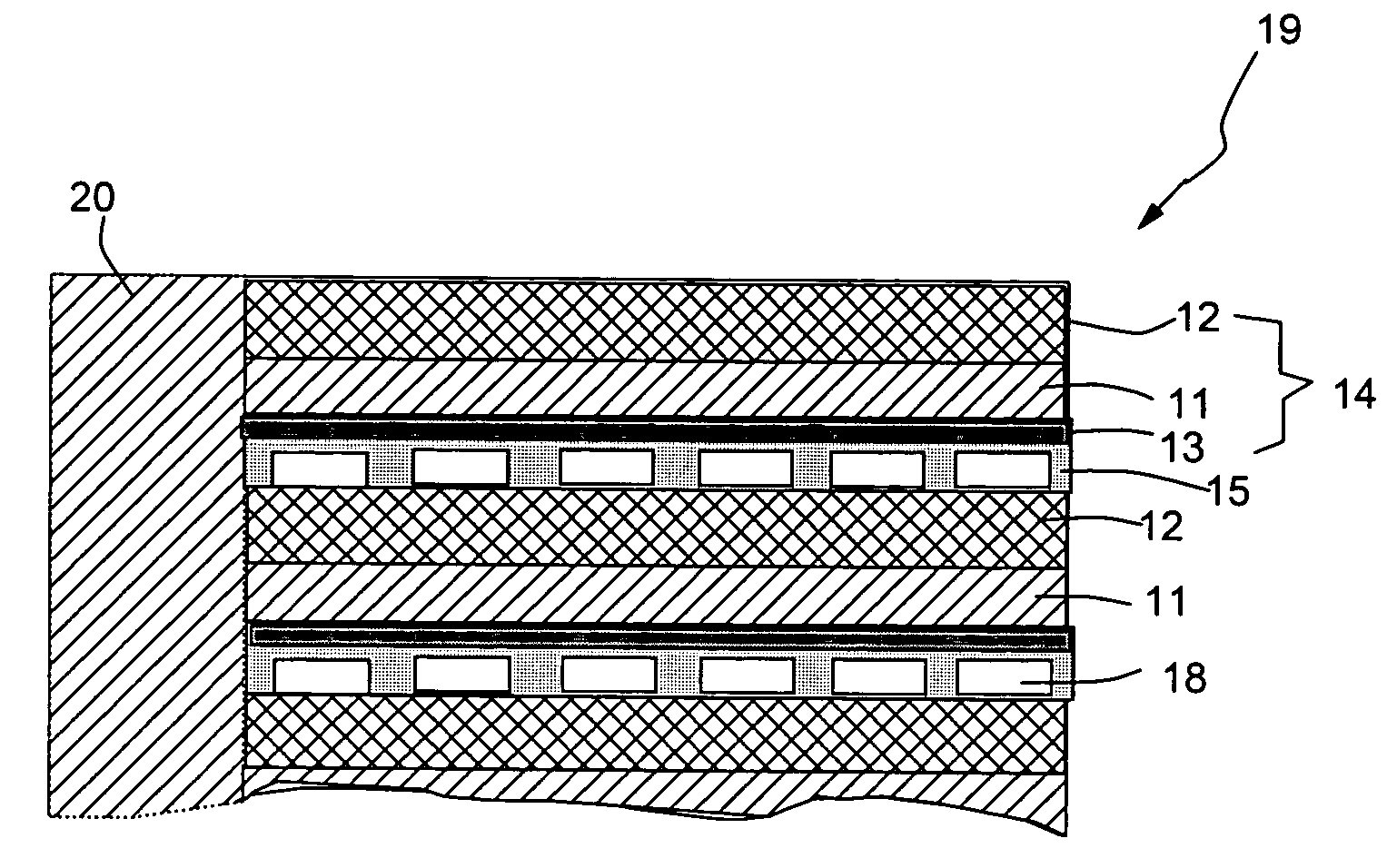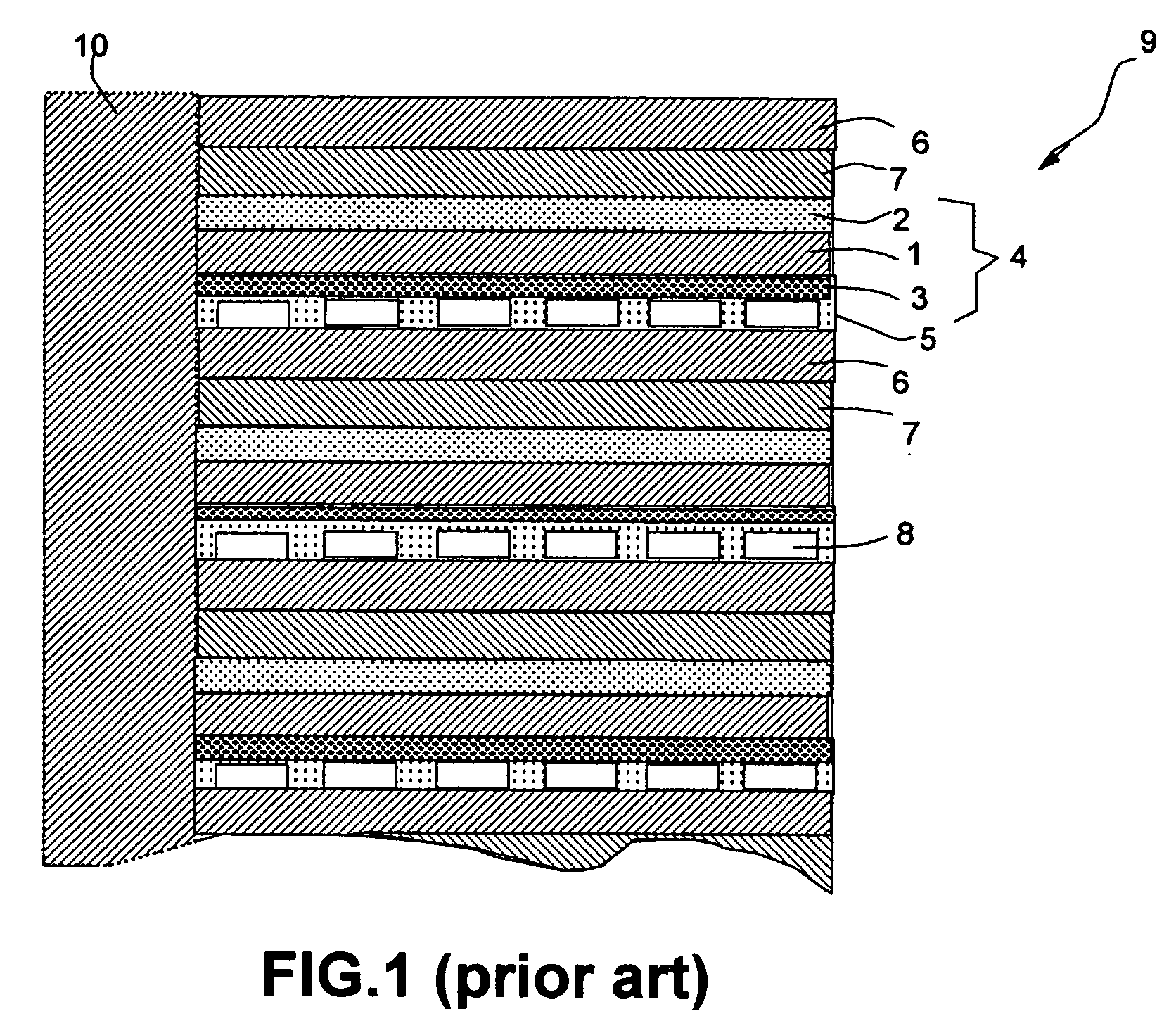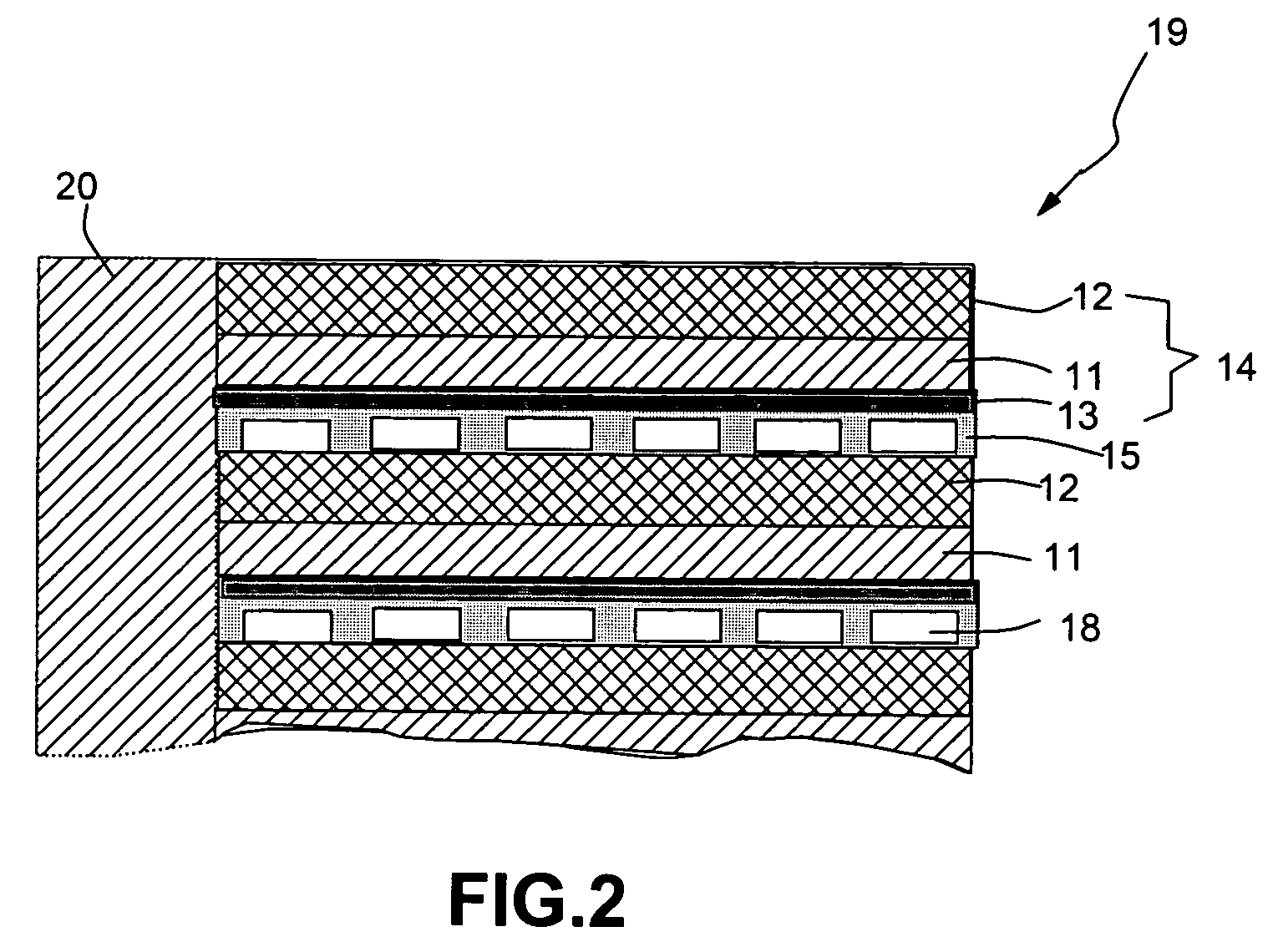Local vapor fuel cell
- Summary
- Abstract
- Description
- Claims
- Application Information
AI Technical Summary
Benefits of technology
Problems solved by technology
Method used
Image
Examples
example 1
[0043] A fuel cell was prepared as follows: Graphite flakes were subjected to a ball-milling treatment to obtain fine particles of several microns in size. These fine particles were mixed with a phenolic resin to obtain a slurry mixture. Chopped carbon fibers were then mixed with the slurry mixture to prepare a composite, which was then molded at a temperature of 250° C. for one hour with a hot press and then partially carbonized first at 350° C. and then at 600° C. for approximately two hours. These treatments lead to the formation of a thin, highly porous carbon structure having an average pore diameter of 60 μm and a porosity of approximately 65%. A sheet of this carbon composite structure was coated on one side with a Pt—Ru catalyst to give an anode of 32 mm×32 mm in dimensions. A carbon cloth was coated with a platinum black catalyst to give a cathode also of 32 mm×32 mm. A polymer electrolyte membrane, poly(perfluorosulfonic acid) ionomer, was held between the anode and the ca...
example 2
[0046] A series of fuel cells were prepared and operated in the same way as in Example 1, with the exception that a thin copper wire was introduced into and out of the anode at a location very close to the polymer electrolyte layer (and, hence, close to the catalyst layer). A desired amount of current was fed into this zone to vary the fuel temperature between approximately 64° C. (the boiling point of methanol) and 130° C. (30° above 100° C., the boiling point of water) while the exterior temperature was maintained at a relatively low level by blowing a cool air to the fuel cell while in operation. It was found that, in general, the higher the reaction temperature, the more stable the voltage was. A higher local temperature near the catalyst phase implies not only a higher vapor content, but also a higher electrolytic reaction rate at the anode (Reaction 1). Both factors are in favor of a more stable voltage response as a function of current by way of an increased reactivity (faste...
PUM
 Login to View More
Login to View More Abstract
Description
Claims
Application Information
 Login to View More
Login to View More - R&D
- Intellectual Property
- Life Sciences
- Materials
- Tech Scout
- Unparalleled Data Quality
- Higher Quality Content
- 60% Fewer Hallucinations
Browse by: Latest US Patents, China's latest patents, Technical Efficacy Thesaurus, Application Domain, Technology Topic, Popular Technical Reports.
© 2025 PatSnap. All rights reserved.Legal|Privacy policy|Modern Slavery Act Transparency Statement|Sitemap|About US| Contact US: help@patsnap.com



